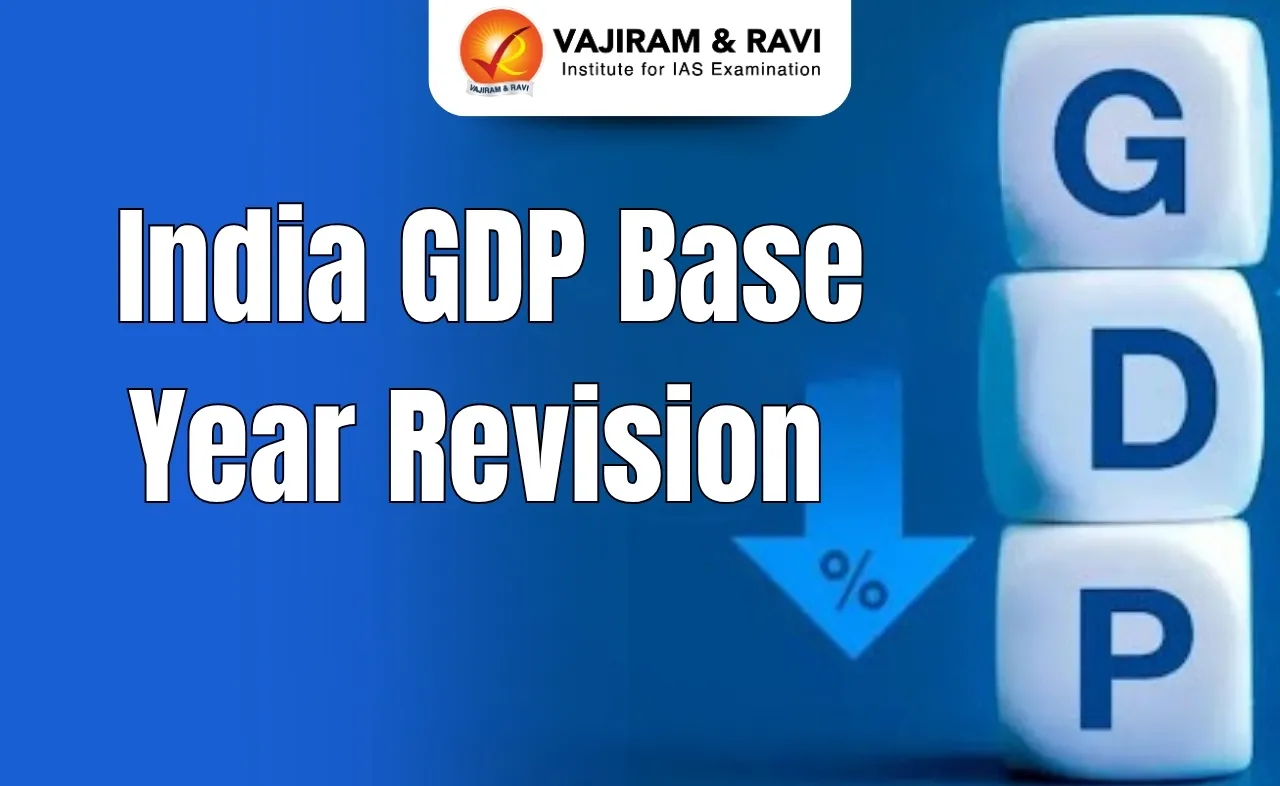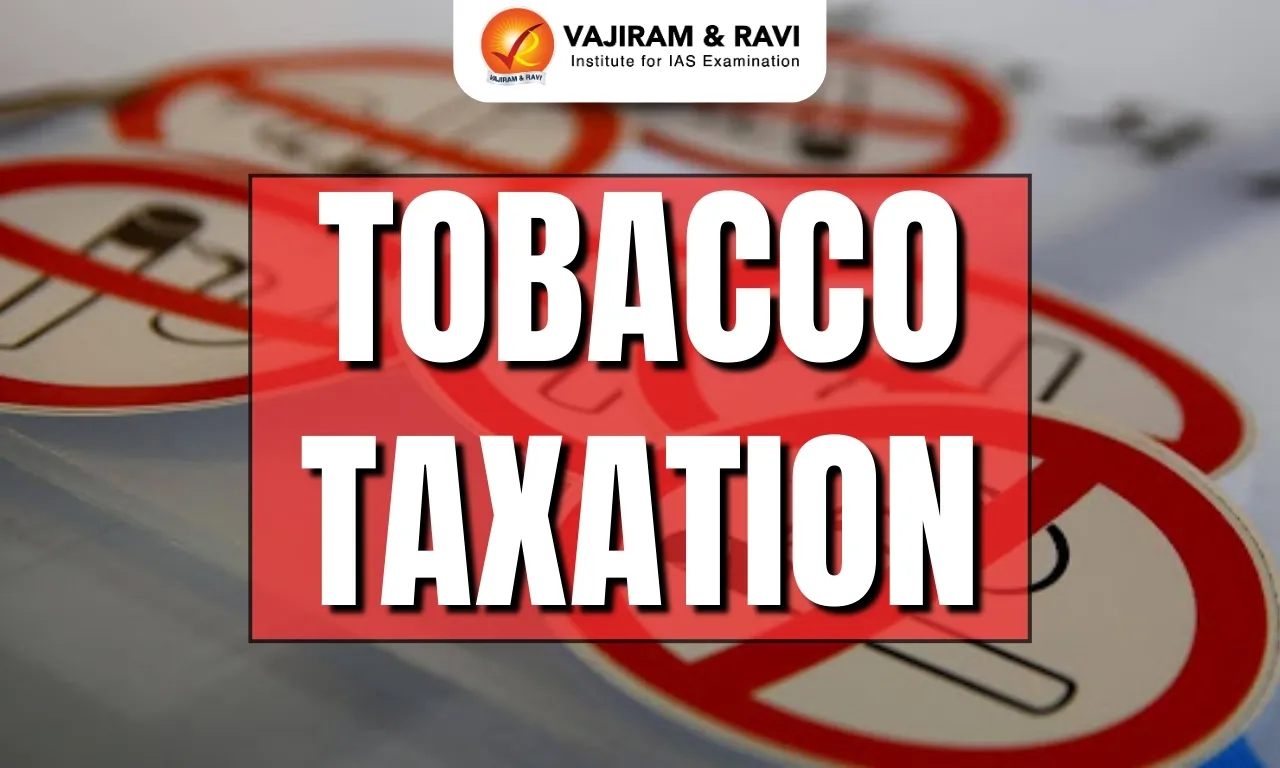India GDP Base Year Revision Latest News
- The Ministry of Statistics and Programme Implementation is set to revise the base year for calculating India’s GDP from 2011-12 to 2022-23, with the updated data series to be released on February 27, 2026.
- In addition, the base years for the Index of Industrial Production (IIP) and Consumer Price Index (CPI) will be updated to 2022-23 and 2023-24 respectively, reflecting broader efforts to align key macroeconomic indicators with current economic realities.
Rationale Behind GDP Base Year Revisions
- The upcoming 2026 GDP base year revision will be the eighth such update in India’s economic history.
- Purpose of Revising the Base Year
- The primary aim of updating the GDP base year is to ensure more accurate measurement of the economy.
- Precise GDP data is essential for policy formulation, business decisions, and broader economic analysis.
- Complexity of GDP Estimation
- GDP tries to capture the entire economic activity in one number, but estimating it is challenging because:
- It must exclude the value of intermediate goods to avoid double counting.
- GDP only includes the market value of final goods and services.
- Even when data is available, calculations are complex; often, all required data isn’t fully accurate or updated.
- Evolving Economic Structure
- India’s economy has transformed structurally over the decades:
- Earlier: Predominantly agrarian economy.
- Now: Services sector contributes over 55% to GDP; agriculture’s share has declined.
- Estimating output in these sectors requires different data sources and methods, reflecting the economy’s changing nature.
- India’s economy has transformed structurally over the decades:
- Improvements in Data and Methodology
- With better data availability and evolving global best practices, statistical methods must be revised to:
- Expand sectoral coverage.
- Use updated datasets.
- Reflect new economic activities (e.g., digital economy).
- With better data availability and evolving global best practices, statistical methods must be revised to:
Benefits of Regular Revisions in GDP Base Year and Methodology
- Reflects Structural Changes in the Economy
- Regular updates help capture shifts in economic composition.
- New and emerging industries can be included, while outdated sectors can be excluded.
- This ensures GDP calculations stay aligned with present-day realities.
- Provides Accurate Measure of Real Growth
- Revising the base year helps in better adjustment for inflation.
- It improves the estimation of real GDP, which reflects actual increase in output, not just price rise.
- This leads to a clearer picture of true economic performance, aiding policymakers and analysts.
Why the GDP Base Year Was Not Revised After 2011-12
- Initial Plan for 2017-18 Revision
- In 2017, the government announced plans to revise the GDP base year to 2017-18.
- The revision was to be based on updated data from the Consumer Expenditure Survey (CES) and Periodic Labour Force Survey (PLFS).
- Data Quality Concerns
- Both surveys faced setbacks:
- PLFS (2017-18) revealed 45-year high unemployment, which the government initially questioned.
- CES (2017-18) showed a decline in consumption, suggesting rising poverty—a reversal of historical trends.
- While PLFS was later accepted post-2019 elections, CES results were never released due to reliability concerns.
- Both surveys faced setbacks:
- Policy Disruptions Made 2017-18 an Abnormal Year
- The year 2017-18 witnessed major economic disruptions:
- Demonetisation in November 2016.
- GST rollout in July 2017.
- These events contributed to a significant slowdown in GDP growth, making 2017-18 unsuitable as a representative base year.
- The year 2017-18 witnessed major economic disruptions:
- COVID-19 Further Delayed the Update
- From 2020 onwards, the COVID-19 pandemic caused severe economic disruptions.
- As a result, subsequent years could not be considered “normal”, delaying the revision further.
Why the Upcoming GDP Revision Is Crucial for India’s Global Standing
- Past Controversies Have Undermined Credibility
- The last GDP revision in 2015 faced heavy criticism.
- Experts, including former Chief Economic Advisor Arvind Subramanian, argued that India was overstating its GDP.
- Critics pointed to discrepancies between different data sources, especially in the manufacturing sector.
- Missed 2017-18 Revision Added to Inaccuracies
- The failure to revise the base year in 2017-18 likely led to data inaccuracies.
- This delay has caused methodological gaps in current GDP estimates.
- Widening Trust Deficit in Macro Data
- Disputes over the PLFS and CES surveys and the absence of a Census have raised concerns.
- There are gaps in poverty and inequality data, further eroding trust in India’s macroeconomic statistics.
- High Stakes for Credibility and Investment
- The new GDP series will be released when India is poised to become the world’s third-largest economy (in nominal GDP).
- As a result, global investors, institutions, and analysts will scrutinize the data more rigorously than ever.
- The revision’s accuracy and transparency will affect:
- Investor confidence, with billions of dollars at stake.
- Policymaking, as reliable data is vital for effective governance.
- India’s reputation in the global economic community.
Last updated on January, 2026
→ Check out the latest UPSC Syllabus 2026 here.
→ Join Vajiram & Ravi’s Interview Guidance Programme for expert help to crack your final UPSC stage.
→ UPSC Mains Result 2025 is now out.
→ UPSC Notification 2026 is scheduled to be released on January 14, 2026.
→ UPSC Calendar 2026 is released on 15th May, 2025.
→ UPSC Prelims 2026 will be conducted on 24th May, 2026 & UPSC Mains 2026 will be conducted on 21st August 2026.
→ The UPSC Selection Process is of 3 stages-Prelims, Mains and Interview.
→ UPSC Result 2024 is released with latest UPSC Marksheet 2024. Check Now!
→ UPSC Toppers List 2024 is released now. Shakti Dubey is UPSC AIR 1 2024 Topper.
→ Also check Best IAS Coaching in Delhi
India GDP Base Year Revision FAQs
Q1. Why is India revising its GDP base year in 2026?+
Q2. What is the new GDP base year for India?+
Q3. Why was the 2017-18 GDP base year plan dropped?+
Q4. How do base year revisions benefit economic analysis?+
Q5. Why is this revision vital for India’s global image?+
Tags: india gdp base year revision mains articles upsc current affairs upsc mains current affairs

















